Whirlpool Galaxy Messier 51 WQHD 1440p Wallpaper Pixelz
The Heart of the Whirlpool Galaxy. The Whirlpool galaxy, M51, has been one of the most photogenic galaxies in amateur and professional astronomy.. IRAS 13277+4727, M 51, Messier 51, NGC 5194, Whirlpool Galaxy: Type: Local Universe : Galaxy : Type : Spiral: Distance: 25 million light years: Constellation: Canes Venatici: Category: Galaxies.
Messier 51, the Whirlpool Galaxy through my telescope r/space
One of these is the spiral galaxy located in the constellation Canes Venatici known as the Whirlpool Galaxy (aka. Messier 51). Located between 19 and 27 million light-years from the Milky Way.
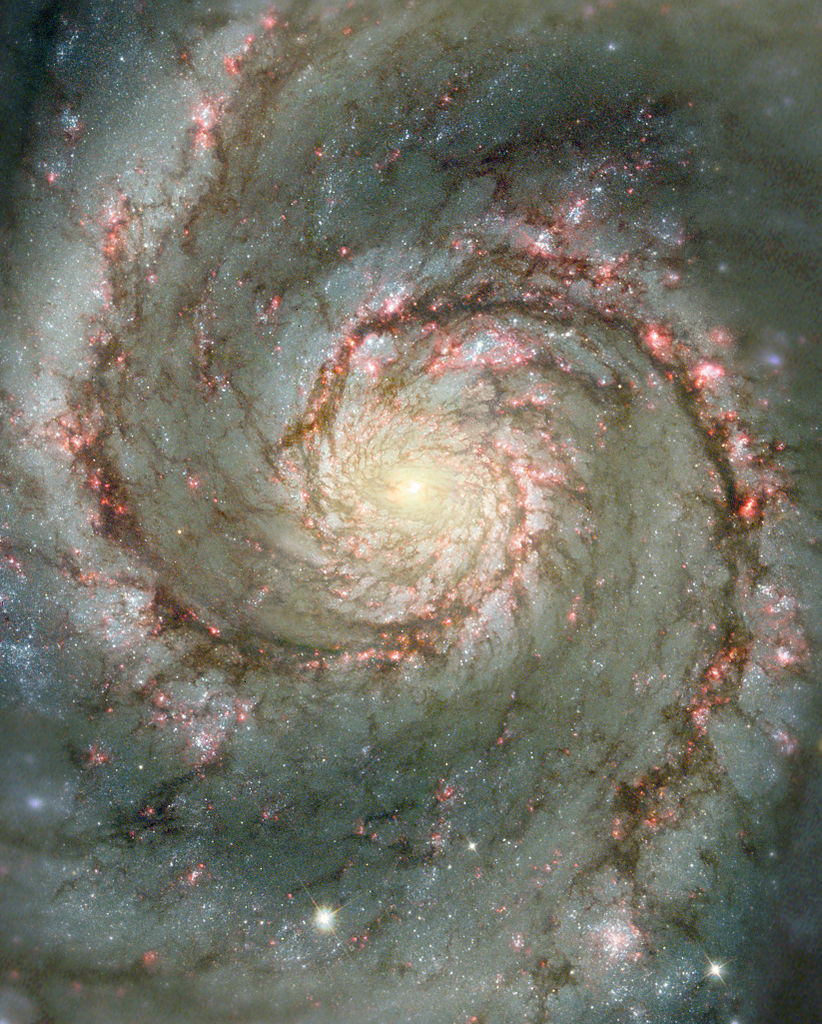
Messier 51 Whirlpool Galaxy Messier Objects
This sequence uses visible (Hubble) and X-ray (Chandra) imagery to highlight different structures within the Whirlpool galaxy (Messier 51). As seen in visible light, the familiar whirlpool shape is traced out by glowing spiral arms. These arms are composed of billions of stars orbiting about the center of the galaxy over millions of years.

Messier 51 the Whirlpool Galaxy Universe Today
Messier 51 (NGC 5194), also known as the Whirlpool Galaxy, is a spiral galaxy located in the constellation Canes Venatici in the M51 Group of galaxies. M51 is 31000000 light years away from Earth. M51 is best viewed during early spring, is magnitude 8.4, and can be viewed with binoculars. M51 is 11' x 7' in apparent size.
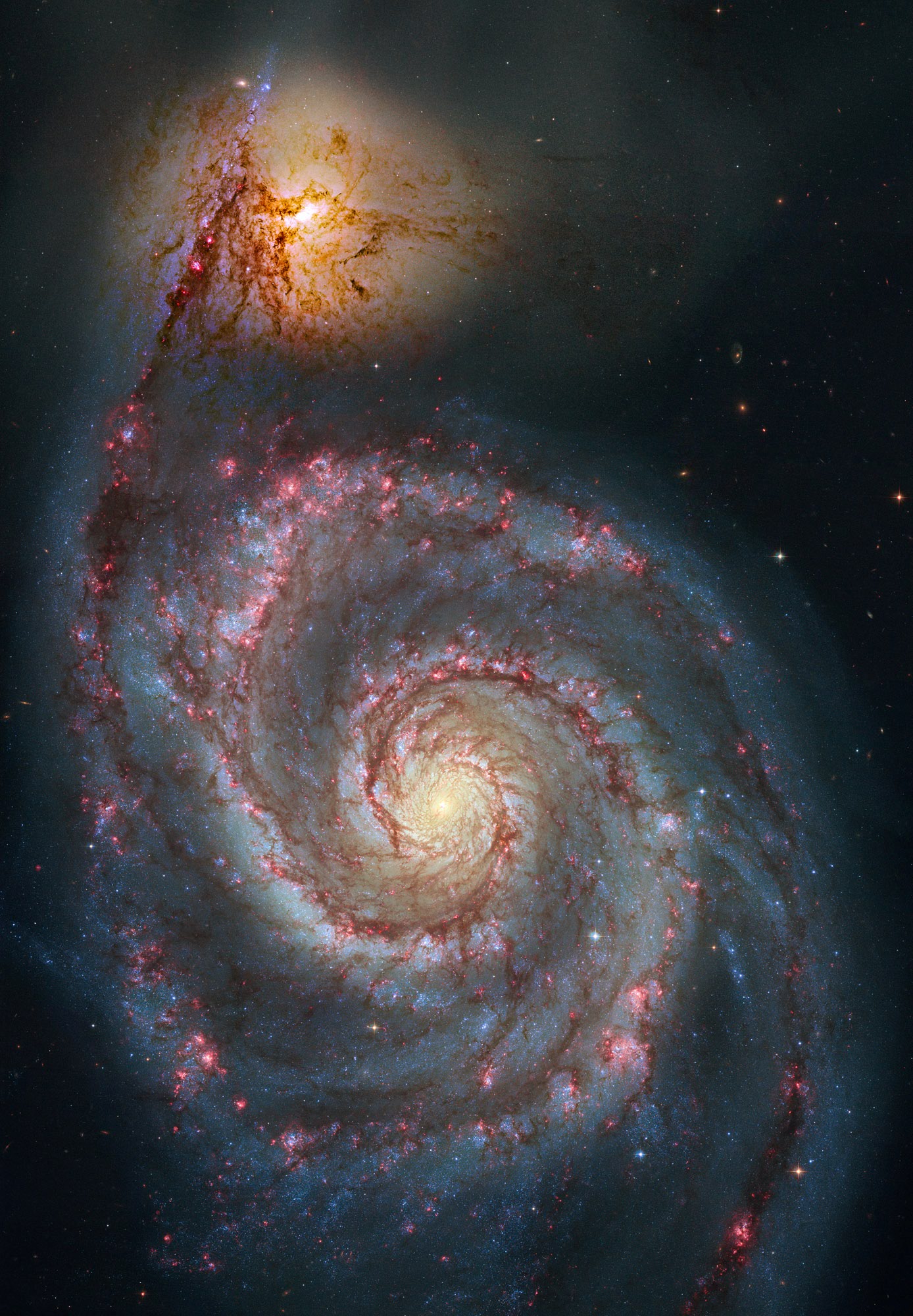
Messier 51 Whirlpool Galaxy Messier Objects
Altitude: 13.4° Azimuth: 24.1° Direction: North-North-East. Messier 51 is a Intermediate Spiral Galaxy in the Canes Venatici constellation . Messier 51 is situated north of the celestial equator and, as such, it is more easily visible from the northern hemisphere. Object Name Messier 51. Object Type Galaxy.

Messier 51 with The Discovery Channel Telescope r/Astronomy
Messier 51 is located 27 million light-years from Earth. Due to a lack of star formation, the companion galaxy in the top of the picture is barely visible as a near ultraviolet object. The Galaxy Evolution Explorer mission is led by the California Institute of Technology, which is also responsible for the science operations and data analysis.

Chandra Spots Very Active Supermassive Black Hole 26 Million LightYears Away Sci.News
The Whirlpool Galaxy captured using a camera and telescope. The Whirlpool Galaxy is estimated to be about 400-million years old. It was observed and cataloged by famous astronomer Charles Messier in 1773 as Messier 51 (M51). It eventually earned the nickname "The Whirlpool" because it resembles a vortex in the water.
The Whirlpool Galaxy (Messier 51) in RGBHa r/astrophotography
In Hubble's captivating image of M51, the red represents infrared light as well as hydrogen within giant star-forming regions. The blue color can be attributed to hot, young stars while the yellow color is from older stars. Discovered by Charles Messier in 1773, M51 is located 31 million light-years from Earth in the constellation Canes Venatici.
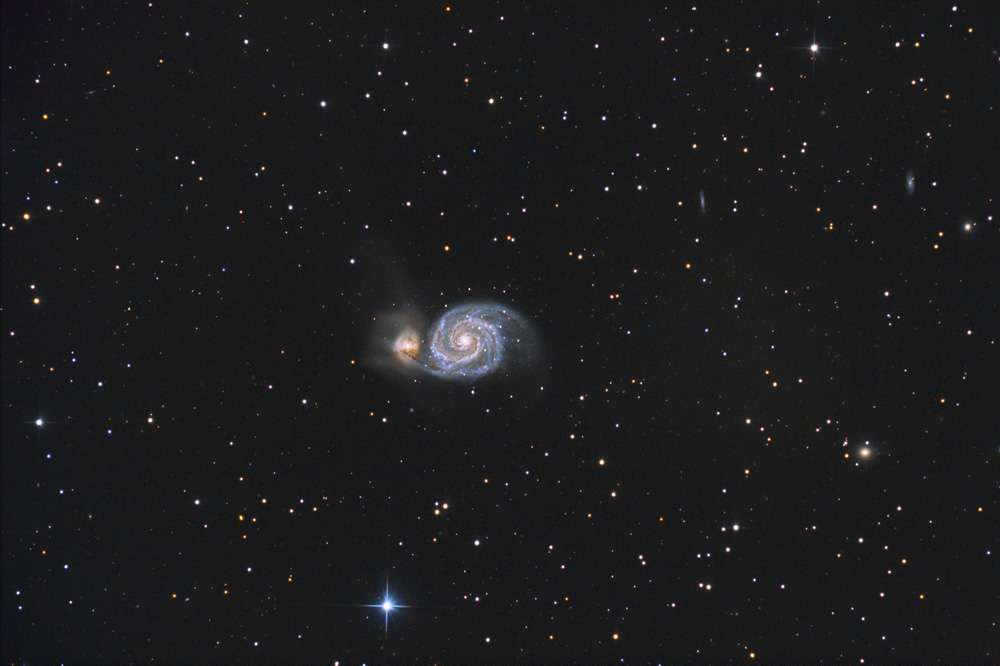
Messier 51 The Whirlpool Galaxy Sky & Telescope
The Whirlpool Galaxy, also known as Messier 51 (M51) and NGC 5194, is a grand-design spiral galaxy in Canes Venatici. The galaxy appears face-on when seen from Earth. Its designation in the New General Catalogue is NGC 5194. The galaxy lies about 23 million light years from Earth. It was named the Whirlpool because of its swirling spiral structure.
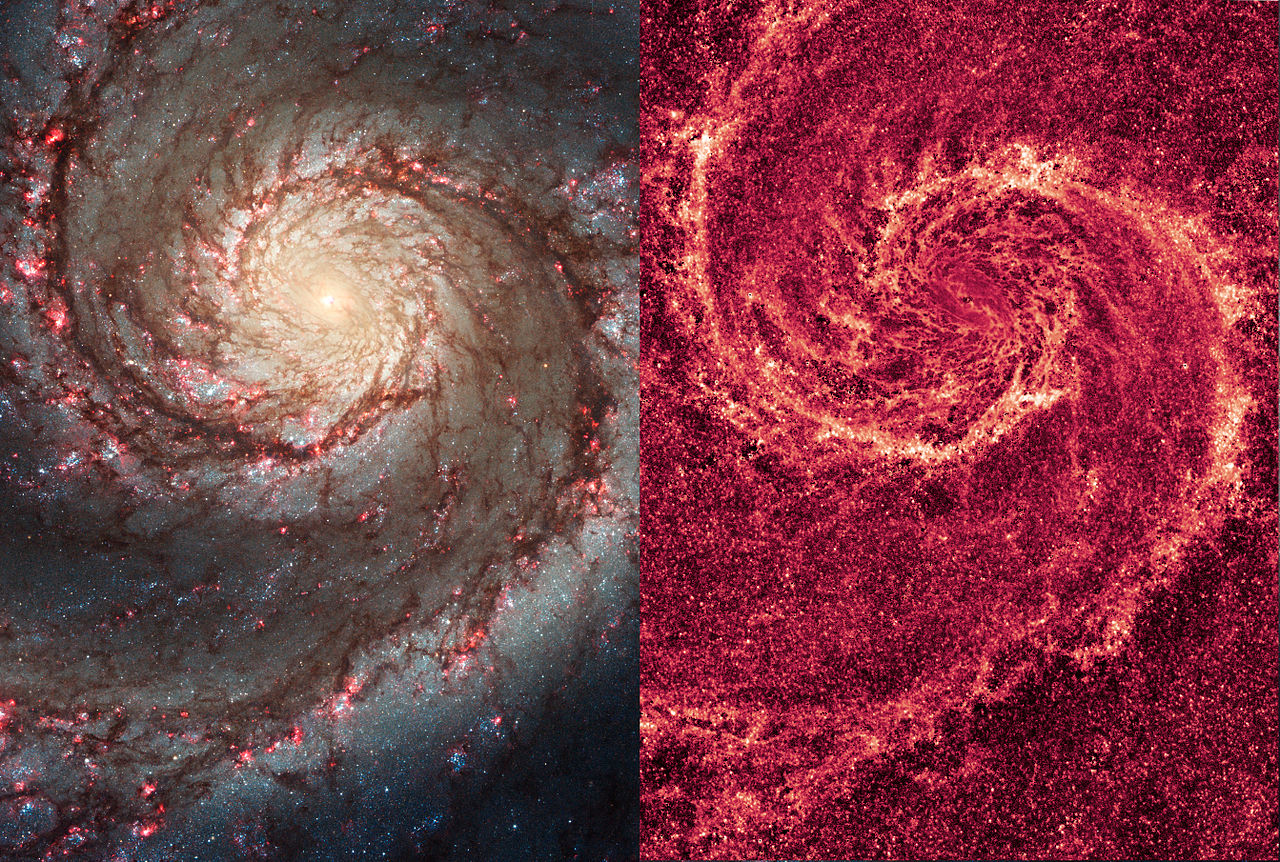
Messier 51 the Whirlpool Galaxy Universe Today
Messier 51 (M51), better known as the Whirlpool Galaxy, is a famous grand-design spiral galaxy located in the constellation Canes Venatici. The Whirlpool Galaxy has an apparent magnitude of 8.4 and lies at an approximate distance of 23 million light years from Earth. It has the designation NGC 5194 in the New General Catalogue. Messier… Read More »Messier 51: Whirlpool Galaxy
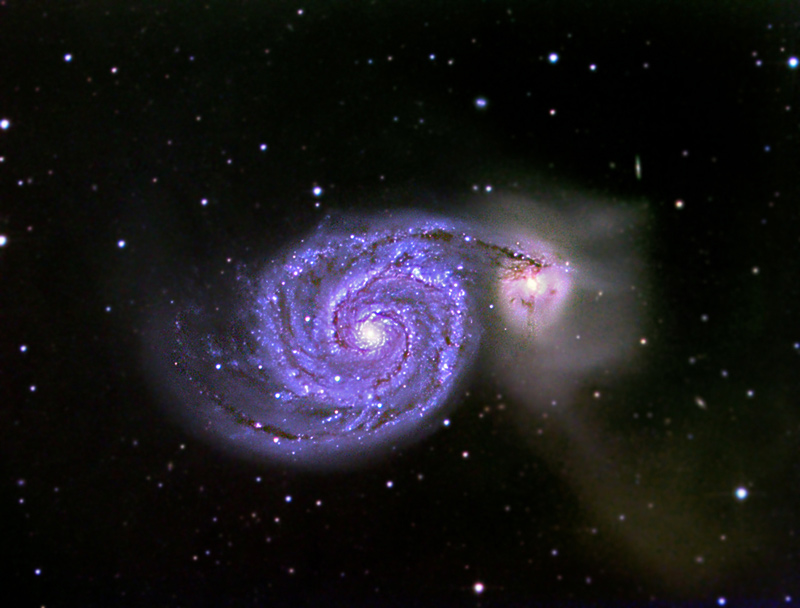
Messier 51 Whirlpool Galaxy ( M 51 ) 37 Million Light Years
Messier 51 or M51 (also designated NGC 5194/5) is a spiral galaxy in the constellation Canes Venatici. It has an apparent visual magnitude of 8.4 and its angular diameter is 11x7 arc-minutes. M51 lies at an estimated distance of 37 million light years. The Equinox 2000 coordinates are RA= 13h 30m, Dec= +47° 11´ which makes M51 best seen.

Telescopic image of the spiral galaxy, Messier 51 Stock Photo Alamy
Messier 51 or M51 (also designated NGC 5194/5) is a spiral galaxy in the constellation Canes Venatici. It has an apparent visual magnitude of 8.4 and its angular diameter is 11x7 arc-minutes. M51 lies at an estimated distance of 37 million light years. The Epoch 2000 coordinates are RA= 13h 30m, Dec= +47° 11' which makes M51 best seen during.
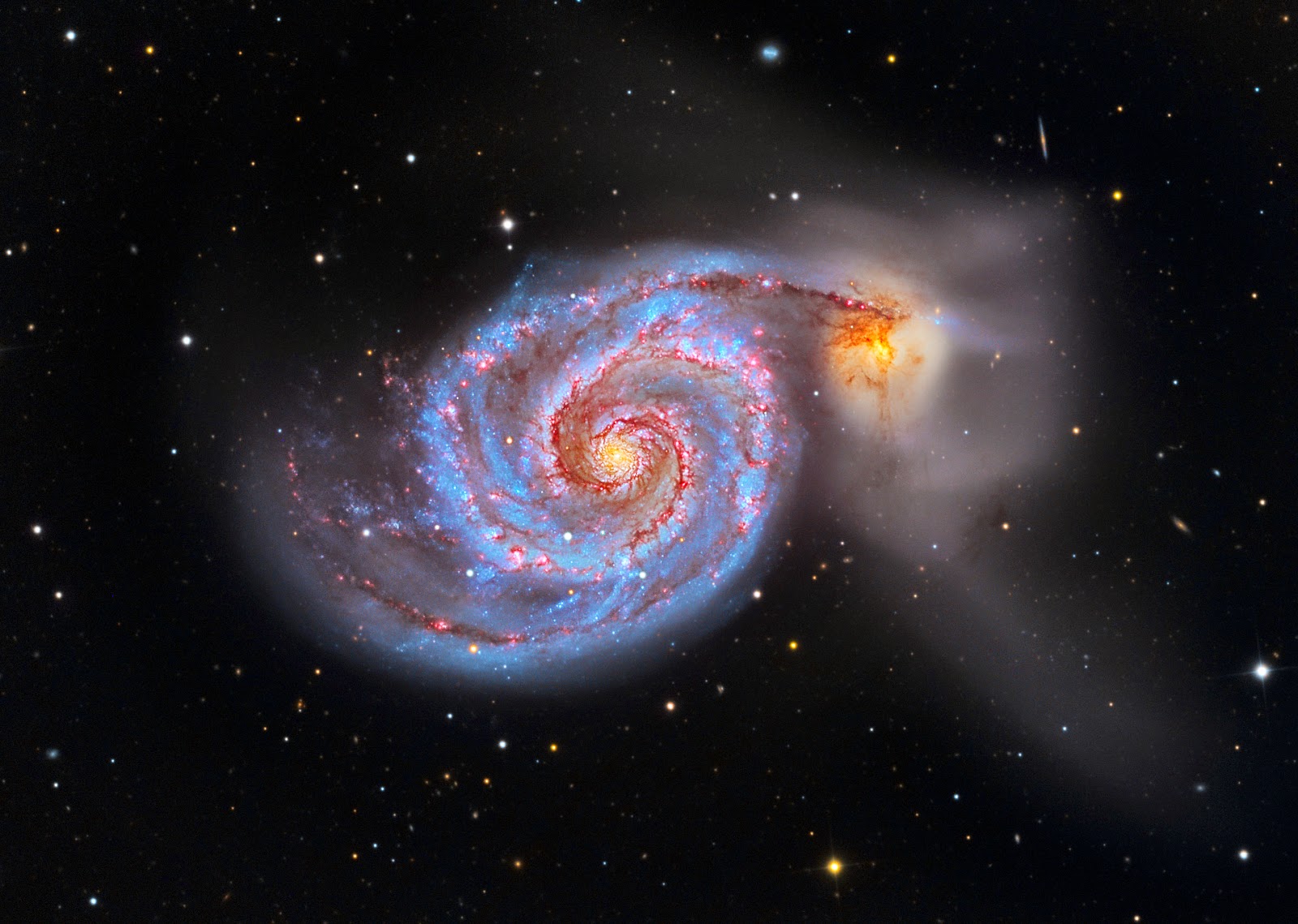
esplaobs MESSIER 51 The Whirlpool Galaxy Image Credit & Copyright Martin Pugh
Then, just slide your telescope a little south and west and you might find this stunning pair of interacting galaxies, the 51st entry in Charles Messier famous catalog. Perhaps the original spiral nebula , the large galaxy with well defined spiral structure is also cataloged as NGC 5194.

Messier 51 Whirlpool galaxy LRGB astrophotography astrojolo
One of these is the spiral galaxy located in the constellation Canes Venatici known as the Whirlpool Galaxy (aka. Messier 51). Located between 19 and 27 million light-years from the Milky Way, this deep sky object was the very first to be classified as a spiral galaxy. It is also one of the best known galaxies among amateur astronomers, and is.

JeanBaptiste Faure A stunning deep image of M51, the Whirlpool Galaxy!
2 likes, 5 comments - hotskyastro on January 7, 2024: "-Whirlpool in Infrared- Messier 51 has been one of my favorites to shoot due to its brightness,." V.M Legary on Instagram: "-Whirlpool in Infrared- Messier 51 has been one of my favorites to shoot due to its brightness, and viewing it in NIR with the 2400 does not disappoint!
A Quick View of Messier 51 (M51) Whirlpool Galaxy r/Astronomy
Messier 110. Messier 110 is a satellite galaxy of the Andromeda Galaxy (M31). Overview The Messier catalog, begun by astronomer Charles Messier in the 18th Century and revised over the years, includes some of the most fascinating astronomical objects that can be observed from Earth's Northern Hemisphere. Among them are deep-sky objects that.